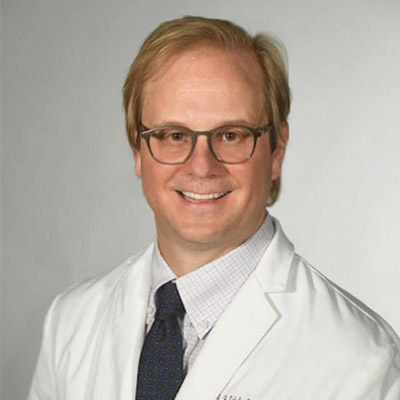Hemifacial spasm is a neuromuscular disorder in which the muscles on one side of the face undergo uncontrolled and debilitating contractions that is generally thought to be caused by pulsatile vascular compression upon the facial nerve root exit zone. As the disorder develops, patients may report spasms in the muscles of the lower face, which may trigger the mouth to be pulled to one side. If left untreated, hemifacial spasm may ultimately affect all the muscles on one side of the face in an almost uninterrupted state of contraction.
Microvascular decompression (MVD) addresses hemifacial spasm by relieving neurovascular compression along the centrally myelinated portion of the facial nerve. In a large number of patients MVD completely relieves spasms with a low occurrence of morbidity. However, there remains a segment of patients who cannot be cured with revision MVD despite sufficient vascular decompression.
Dr. Raymond Sekula, Jr.
Raymond F. Sekula, Jr., MD, MBA, is a neurosurgeon and specialist in cranial facial disorders in the Department of Neurological Surgery at NewYork-Presbyterian/Columbia University Irving Medical Center. Dr. Sekula served as senior author on a study investigating the outcomes and complications of facial nerve massage in patients who had previously undergone MVD but continued to have signs and symptoms of hemifacial spasms. A brain MRI following the decompression confirmed sufficient decompression of the centrally myelinated portion of the facial nerve.
The study included patients 18 years or older with hemifacial spasm who underwent facial nerve massage by Dr. Sekula between December 2015 and October 2020. Despite conventional therapies that included botulinum injections and medications, as well as decompression of the centrally myelinated portion of the facial nerve, all patients continued to experience inadequate relief and were offered facial nerve massage as a rescue treatment.
Surgical Technique of Facial Nerve Massage
Facial nerve massage is performed under general anesthesia with the patient placed in the lateral decubitus position. During the procedure, Dr. Sekula accesses the cerebellopontine angle using retrosigmoid craniectomy measuring roughly 2 × 1.5 cm. The facial nerve is inspected from its root exit point at the brainstem to the porus acousticus for neurovascular compression. After confirming the absence of neurovascular compression, Dr. Sekula uses a micro dissector to gently rub or massage the facial nerve along the attached segment and the distal cisternal segment of the nerve for <10 seconds in each location. Before and after the facial nerve is massaged, the nerve is probed with monopolar stimulation. Notably, the fascicles of the facial nerve are not separated from each other. The wound is then closed in layers.
Facial nerve massage for treatment of hemifacial spasm refractory to MVD; arrowhead points to the dissector used to massage the facial nerve.
Patients in the study were assessed postoperatively for complete, partial, or absence of spasm relief. “During telemedicine and office follow-up appointments, we recorded the presence and severity or absence of hemifacial spasms, as well as the incidence and persistence of selected operative complications,” says Dr. Sekula.
Patients described their outcome as:
| Grade I: | complete spasm relief |
| Grade II: | >75 percent spasm relief |
| Grade III: | >50 percent spasm relief |
| Grade IV: | <50 percent spasm relief |
After facial nerve massage, durable and, at least, partial relief of spasms with a relatively low complication rate was observed in most patients with hemifacial spasm.
During the five-year study period, 400 patients underwent initial microvascular decompression; 29 patients underwent a revised MVD; and 13 received facial nerve massage. Of these 13 patients, 11 were female; ages ranged from 28 to 73 years old; and one patient was lost to follow-up.
Study findings, which were published in the October 1, 2011, issue of Neurosurgery, showed at follow-up of the 12 remaining patients undergoing facial nerve massage:
- 7 patients (58.3 percent) reported complete spasm relief (grade I)
- 2 patients (16.7 percent) reported >75 percent spasm relief (grade II)
- Zero patients reported >50 percent of spasm relief (grade III)
- 3 patients (25.0 percent) reported <50 percent spasm relief (grade IV)
- 1 patient experienced a delayed facial paresis, which resolved entirely within weeks, and another patient experienced high-frequency hearing loss
In their conclusion, Dr. Sekula and his research colleagues noted that the majority of patients achieved durable and at least partial relief of spasms following facial nerve massage.






